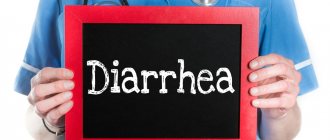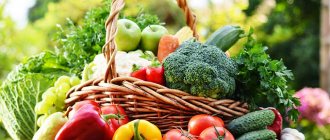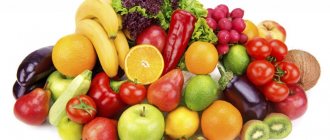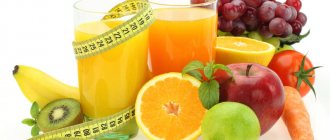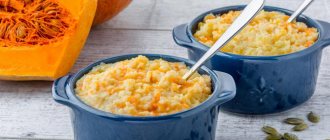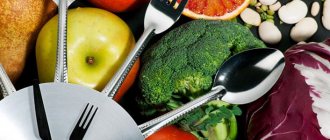In youth, a person mostly lives carefree, conducts gastronomic experiments, takes risks on extreme entertainment, spends sleep time on fun, etc. All this affects health, but at the age of 25-30, few people will think about it. And, often, if after such experiments you normalize your rhythm and lifestyle, the body quickly recovers. The same cannot be said about older people. Recovery is especially difficult for older people, whose vital capabilities of the body are no longer what they were 20 years ago.
Moreover, at 60 years old, in order to restore normal well-being and a surge of vital energy, you will have to “work” in different directions. In particular, for health and youth at sixty you need the following:
- Rejection of bad habits,
- Timely visit to the doctor, compliance with his recommendations,
- Healthy sleep,
- Minimizing the risk of stressful situations,
- Active lifestyle, daily physical activity, morning exercises,
- Walks in the open air,
- Proper nutrition.
Women over 60 often forget about the last point, but at the same time complain that they have grown three sizes compared to “their 40-year-old selves.” However, it is nutrition that for those over 60 can become an effective prevention of the development of many diseases.
Features of the elderly
The aging of the body cannot be stopped. Regenerative capabilities gradually decrease, psychomotor and protective functions slow down, and the activity of the gastrointestinal tract weakens.
To maintain good health in old age, it is important to maintain a balanced energy balance through a well-chosen daily diet. When developing a menu, several factors characteristic of older people are taken into account:
- slow metabolism;
- developing pathologies;
- sedentary lifestyle;
- development of constipation;
- frequent use of medications.
Principles of nutrition
To avoid the negative consequences caused by natural age-related changes, as well as to maintain vigor for older people, following some important principles of proper nutrition:
- Diet variety. The daily menu must include fruit and vegetable varieties, greens, legumes and grains, dairy products, meat, fish, cereals, eggs, nuts.
- Compliance with drinking regime. After waking up in the morning, it is recommended to immediately drink a glass of filtered water. Drink enough liquid throughout the day.
- The predominant use of vegetable fats in cooking.
- Energy balance of nutrition. It is important to organize calorie counting throughout the day. This will allow you to avoid overeating, which has a negative impact on the body. At the age of over 60 years, the optimal daily energy intake varies between 2100-2350 kcal. After 80 years, this figure is 1800-2000 kcal.
- Prevention of atherosclerosis. The most common diseases that develop in old age are vascular atherosclerosis. It is important to reduce the risk of atherosclerotic plaques by reducing the consumption of animal fat, giving preference to fish.
- Fractional meals. It is advisable to consume food in small portions 4-6 times throughout the day. It is recommended to maintain the interval between dinner and falling asleep within 3.5-4 hours. This is important for slow metabolism, as it prevents the occurrence of excessive gas, heartburn, and sleep disturbances.
- Utility priority. When compiling a diet, preference should be given to easily digestible varieties of foods that have a beneficial effect on the functions of the gastrointestinal tract.
- Compatibility with medications. When your doctor prescribes medications, you should consult about combining them with specific types of food. Medicines often have an appetite suppressant effect, which impairs the functioning of taste buds.
- Determining the convenient consistency of food consumed. Dental health remains a common problem among older people. If there are difficulties in chewing, then preference is given to ground foods.
It is important not only to choose healthy products wisely, but also to prepare them correctly, preserving the vitamins and mineral compounds they contain. When served, dishes should look aesthetically pleasing, awakening the appetite. When preparing a diet, the individuality of the elderly person is taken into account, his food preferences, as well as his general health, are taken into account.
Authorized Products
Elderly women can eat boiled or stewed lean meat, low-fat fermented milk and dairy products, seafood and lean fish, as well as chicken eggs. As for plant foods, preference should be given to those that contain little starch. These are green peas, cucumbers, cabbage, herbs, asparagus, bell peppers and some other crops. Following the principles of proper nutrition, at the age of 60 you need to drink herbal infusions, compotes and fresh juices, giving up harmful drinks.
Healthy food
The organization of a balanced, healthy diet aimed at older people should begin with an analysis of the list of products that can benefit the body. Of course, personal preferences are taken into account, as well as possible individual intolerance to specific food varieties.
A fairly extensive list of products that serve as a source of compounds important for maintaining health and energy balance is allowed to be included in the menu of older people.
Squirrels
The body must receive a variety of protein foods. The protein contained in seafood is easier to digest, which is important when metabolic processes slow down with age. More often they include fish in the diet, in which the protein level is on average 15-20%.
The benefits of fish dishes are due to the inclusion of fatty acids, essential amino acids, various compounds beneficial to the body (for example, iodine, calcium, phosphorus), as well as vitamins, among which are ascorbic acid, A, E, D, group B.
Boiled or steamed lean meat and eggs are allowed. Includes nuts and seeds, which saturate the body with vitamins and polyunsaturated acids.
Fats
A balanced menu necessarily contains foods containing fat, but older people should give preference to vegetable oils, choosing unrefined varieties for use as a dressing.
Carbohydrates
Complex carbohydrates play an important role in a diet developed for an elderly person. They are absorbed more slowly, which helps normalize digestive processes, promote a long-lasting feeling of fullness, and prevent excess weight gain. Complex carbohydrates contain pectin, glycogen, starch, and fiber.
These beneficial compounds can be found in vegetables, various cereals, fruits, and bread products made from coarsely ground flour.
Macro- and microelements and vitamins necessary for the body
Natural aging of the body is reflected in a decrease in the quality of absorption of various useful elements.
It becomes relevant for people over 60 years of age to include in the menu not only fruit and vegetable products rich in compounds important for life. It is necessary to take mineral and vitamin complexes recommended by your doctor.
Calcium
The older a person gets, the more often he or she develops calcium deficiency, which leads to a decrease in bone strength and the development of osteoporosis.
To prevent such dangerous conditions, it is important to consume dairy products, choosing fermented milk varieties with low fat content. Ryazhenka, kefir, and natural yogurt are beneficial.
Sex
By the age of 65, men reach the end of menopause, hormone production decreases, and andropause occurs. This does not mean the end of sexual life, but rather is classified as the beginning of a new stage. Prolonged foreplay and prolonged stimulation should not be a reason to refuse sexual relations. See also: how to lose weight for a 35-year-old man. Sex leads to steady weight loss, this has already been scientifically proven. In addition, sex life gives a good mood, self-confidence and is a prevention of stress and a number of diseases that unsettle you.
READ Lose weight for an 11 year old boy – diet option

Rational consumption of food
In old age, subject to a rational selection of food intake and the inclusion of gymnastic exercises and walks in the daily routine, it is possible to maintain cheerfulness, good physical shape, activity, a clear mind, and strong memory.
Rational consumption of food usually becomes relevant after reaching retirement age, when awareness of the value of health appears. It will help when independently developing a diet for the elderly to follow a number of recommendations from the World Health Organization, highlighting several types of products and their daily share.
Table 1. Daily intake of basic products
| List of products | Daily norm | Note | |
| 1 type | Potatoes, cereal dishes, bakery products | 40 % | Over the age of 65, daily intake should not exceed 1.5 kg |
| Type 2 | Vegetables, greens, fruits | Up to 35% | The daily recommended intake is 400 g. Dried and frozen varieties are allowed. Canned foods excluded |
| Type 3 | Protein types - fish, poultry, nuts, eggs, meat, legumes | ≈ 20 % | It is recommended to select lean meat varieties |
| 4 type | Dairy products | ≈ 5 % | Preference is given to products with low fat content |
| 5 type | Fats, sugar, oils, salt, drinks, flour products | ≈ 5 % | Select based on health status |
Psychological attitude
An optimist loses weight faster than a pessimist. Low self-esteem, fear of helplessness and loneliness, isolation and irritability create a psychological barrier in the fight against excess weight. Drive gloominess out of your life! Do what you love - what you know how to do well and with pleasure. Communicate with smart and positive people, they will bring a bit of sunshine and sparkling curiosity into your life. Exercise regularly, thereby provoking the production of endorphins (hormones of happiness). Create and invent, go to the cinema, museums and exhibitions. Forget how old you are. Train your brain and smile at the reflection in the mirror.
The one who walks will master the road, remember? Good luck to you.
Regime organization
Knowledge of the basic principles of choosing products for the menu in old age allows you to easily organize an individually oriented diet and diet.
Having developed a meal schedule based on the recommendations of experts, it is important to adhere to it. When determining a menu that involves eating food 4-6 times a day, it is taken into account that the main meals should be the most nutritious. For snacks, choose light, low-calorie dishes.
For a diet with an average intake of 2000 calories, the proportion of free sugar should be 5%. The inclusion of fructose and sucrose in drinks and ready-made dishes is taken into account, and not just the use of granulated sugar for tea or coffee. An excess of free sugars (more than 50 g per day) negatively affects the condition of tooth enamel, causes excess weight gain, and causes the development of diabetes, hypertension, and cardiovascular pathologies.
It is important to consume no more than 5-6 g of salt per day, given its inclusion in a variety of finished products, for example, bread. It is advisable to add a minimum amount of salt to food during cooking.
Of the total daily calorie content, the share of proteins varies between 12-15%. Calculate the average requirement in old age with good health, taking into account body weight. It is recommended to maintain a ratio of 1 g/kg. In case of pathological changes, the protein norm is increased. It can be 1.5 g/kg.
They prefer boiled, stewed, baked dishes. It is useful for elderly household members to steam meat and fish delicacies. Try to reduce the consumption of fried foods as much as possible.
You need to eat vegetables, beans, and other legumes, as well as fruits in small portions daily. They are usually used to organize possible additional snacks. Whole grains will benefit you.
Fruit and vegetable varieties rich in fiber are recommended to be consumed raw. Usually they are first crushed using a blender or grater. The inclusion of such food in the daily menu helps to normalize the functions of the gastrointestinal tract.
Fish, as a priority source of protein, is introduced into the diet 2-3 times a week. Alternate it with eating lean meats. It is recommended to cook first courses in rich meat broth no more than once every 6-7 days. It is useful to eat a handful of nuts or seeds every day - sunflower, pumpkin.
Legumes that help prevent or slow down the development of cardiovascular pathologies and osteoporosis can be used for cooking every other day. Contraindications are taken into account, including kidney and joint diseases, gout.
Eggs (1-2 pieces) are allowed for consumption every 3-7 days. As a salad dressing for adding to porridge, unrefined varieties of vegetable oil are used, which contain a large amount of healthy fats.
Dill, lettuce, parsley and other varieties of fresh herbs, which saturate the body with a variety of vitamins, allow you to diversify the menu.
Fasting in old age is contraindicated, but fasting days can be beneficial in the absence of serious pathological abnormalities after receiving medical advice.
Contraindications
Strict diets based on the exclusion of many healthy foods are contraindicated for mature ladies. An unbalanced diet after 60 years will not help maintain health; rather, it will cause loss of strength and premature aging.
Contraindications to dietary restrictions:
- problems with the musculoskeletal system;
- failure of the liver;
- renal dysfunction;
- cardiovascular diseases;
- sclerosis, coronary heart disease;
- other pathologies.
If a woman is healthy, there are no contraindications to proper nutrition after 60 years. But just in case, you should consult with a gastroenterologist, therapist, gynecologist and endocrinologist. This is necessary to eliminate the risk of an undesirable reaction of the body to certain products.
Sample weekly menu
Creating a menu that benefits older people is always personal-oriented, but the basis for development is usually the example offered by experts.
Table 2. Weekly menu
| Breakfast, 7-00 | Lunch, 11-00 | Lunch, 13-00 | Afternoon snack, 16-00 | Dinner, 19-00 |
| MONDAY | ||||
| Rice milk porridge; boiled grated carrots with apple; tea; cookie | Green tea; slice of rye bread with cheese | Vegetable salad with herbs; green pea soup; fish cutlet with mashed potatoes; rosehip compote | Glass of fermented baked milk | Boiled vegetables with veal cutlet; baked apple |
| TUESDAY | ||||
| Oatmeal milk porridge; curd cheesecakes; green tea | Drink made from chicory with added milk; ham sandwich | Cauliflower based soup; stewed lean beef with vegetables; cranberry compote | Large apple | Cheese eggplant casserole with mashed potatoes, jelly with fresh berries |
| WEDNESDAY | ||||
| Millet milk porridge; pear or apple; cocoa | Whole tea grain bun; banana | Salad based on blanched sweet peppers; vegetable soup with beef; steamed chicken meatballs with rice garnish; prune compote | Curd mousse, rosehip compote | Baked fish; Tea with lemon |
| THURSDAY | ||||
| Corn milk porridge; barley coffee; cheesecake with jam | Slightly warmed milk; biscuit slice | Fish soup; vegetable stew; green tea | Steamed dried fruits | Cabbage pancakes; yogurt |
| FRIDAY | ||||
| Oatmeal without milk; boiled egg; green tea; cookie | Cocoa with added milk; chicken pate sandwich | Tomato soup with rice; steamed veal steak with stewed vegetables; compote with rose hips | Hard cheese; grape | Tomatoes stuffed with minced meat and rice; kefir |
| SATURDAY | ||||
| Buckwheat porridge; cocoa with milk; cheesecake | Black tea; rye sandwich with cheese and butter | Lentil soup with croutons; steamed fish with mushroom sauce and boiled potatoes; cranberry jelly | Fruit platter | The vinaigrette; Varenets |
| SUNDAY | ||||
| Two egg omelette; banana; green tea; cake | Chicory with milk; slice of rye bread with ham | Meat broth soup with vegetables; boiled chicken breast with a side dish of pasta; fresh fruit | Rye bun with orange jam; kefir | Veal zrazy with boiled vegetables; yogurt |
The proposed menu option can serve as a guide, as it includes varieties of products recommended for older people. Designed for 5 meals, but if desired, you can add a light snack 3-4 hours before bedtime.
Table 3. Approximate daily diet
| Eating | Advantageous dishes | Weight, volume, quantity |
| Breakfast | Milk porridge | 170 g |
| Boiled egg | 1 PC. | |
| Tea, cocoa | 200 ml | |
| Cookies, cupcake, cheesecake | 30-50 g | |
| Lunch | Tea, chicory, cocoa, milk | 200 ml |
| Sandwich, bun, biscuit | 25-30 g | |
| Dinner | Soup | 350 g |
| Salad | 100 g | |
| Boiled chicken, meat, fish | 100 g | |
| Garnish | 140-150 g | |
| Beverages | 200 ml | |
| Afternoon snack | Fresh fruits | 120 g |
| Cottage cheese | 40 g | |
| Beverages | 200 ml | |
| Dinner | The vinaigrette | 100 g |
| Zrazy | 70-100 g | |
| Fish | 70 g | |
| Vegetable cutlets | 100 g | |
| Casserole | 100 g | |
| Fermented milk drinks | 200 ml |
There are no strict parameters for daily portions, but it is important not to overeat to facilitate bowel function. When selecting flour products, it is recommended to give preference to dietary varieties.
Restrictions and prohibitions
When carefully organizing a menu aimed at the elderly, specific recommendations on the need to limit or even completely eliminate some harmful products must be taken into account.
The purpose of the restrictions is to prevent the development of the negative consequences of illiterate nutrition, which include cardiovascular and gastrointestinal pathologies, obesity, and diabetes.
List of undesirable products that require reduction in the menu:
- sugar;
- polished cereals;
- cakes, pastries;
- smoked meats;
- confectionery;
- pickles;
- spicy food;
- jam;
- pasta, especially soft varieties;
- canned food;
- fatty meats;
- White rice;
- strong coffee;
- mayonnaise;
- alcohol;
- marinades.
Sweets can be replaced with dried fruits if desired. You can eat fresh berries.
It is recommended to completely remove the following foods from your diet:
- carbonated sweet drinks;
- sausage;
- fast food.
It’s easy to avoid harmful foods by creating a balanced, healthy diet. In the absence of contraindications, you can eat the above types of food in small quantities, but you should include them in the menu no more than once or twice a week.
Fully or partially limited products
The ban includes smoked meats, canned food, marinades, sausage products, semi-finished products, and ham. Fatty foods, especially those containing animal fats, are also not very healthy. In addition, you should try to eat less simple carbohydrates. They are found in wheat bread, pasta and other flour products, as well as in sweets.
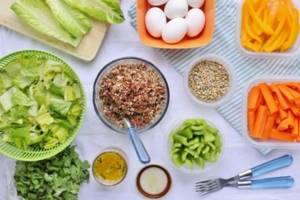
Prohibited foods include foods that should not be eaten at all or consumed in minimal quantities and only from time to time:
- Vegetables, fruits - beets, carrots, horseradish, potatoes, figs, mangoes, dates, banana, grapes, melon.
- Flour and confectionery products - dough, buns, pasta, dumplings, wheat bread, dumplings, pancakes, pancakes, halva, preserves, pastries, cake, jam, jam, cookies, candies.
- Meat, poultry, sausages - bacon, fatty pork, lard, frankfurters, sausages, smoked chicken, duck, goose, boiled and smoked sausage.
- Seafood – salted and canned fish, caviar, semi-finished products.
- Fats – butter, margarine, cooking oil, coconut oil, fish oil, spread, animal fat.
- Drinks – coffee, energy drink, soda, beer, wine, liqueur, other alcoholic drinks.
- Seasonings and substances - sugar, honey, mustard powder, mayonnaise, ketchup, ginger, table vinegar.
Nutrition in old age with various diseases
It is especially important for older people to create a thoughtful diet if they have been diagnosed with certain pathological conditions.
For chronic constipation
Deterioration of stool, consisting in the development of constipation, is observed quite often in old age due to a decrease in the activity of intestinal peristalsis.
In such a situation, in order to improve the condition, it is recommended to include beets, carrots, as well as cucumbers and zucchini in the menu. You need to abstain or limit the consumption of legumes and potatoes as much as possible.
Berries help, except blueberries and lingonberries. Be sure to include fresh, frozen or dried fruits in your daily menu. It is useful to eat buckwheat, millet, oatmeal, lean fish, lean meat, and fermented milk drinks. Sauerkraut, oatmeal cookies, rye bread, and greens are recommended.
For hypertension
To alleviate the condition caused by frequent increases in blood pressure, it is important to introduce foods containing potassium into the diet. You need to eat broccoli, kiwi, bananas. Citrus varieties, grapes, and dried apricots help normalize blood pressure.
Nutrition for pneumonia in the elderly
The development of a diet for the development of pneumonia is based on the need to strengthen the immune system and reduce intoxication. Select products with anti-inflammatory characteristics to reduce the risk of negative side effects.
At the first stage of the disease, drink plenty of fluids (the daily norm is at least 1.5 liters). Food is consumed in crushed or semi-liquid form up to 7 times a day. Reduce the amount of simple carbohydrates and animal fats as much as possible.
The menu is based on easily digestible food varieties: slimy porridge, low-fat cottage cheese, chicken broth, fresh juices, chicken meat. Among the drinks with anti-inflammatory effects, decoctions are recommended - blackcurrant, rosehip, as well as cranberry juice, tea with lemon.
Gradually, as the severity of severe symptoms decreases, more protein foods are included to activate the defenses - fish, lean meat, cottage cheese, eggs.
For diabetes
In order to prevent complications caused by the development of diabetes, the diet is carefully monitored, from which flour, fatty and fried foods are excluded, and sugar is limited. The advantage in the menu should belong to dairy and vegetable (excluding potatoes) products.
For arthritis, arthrosis
It is recommended to consume more vegetable and fish dishes. The compounds they contain help reduce inflammatory processes and help prolong the remission stage.
